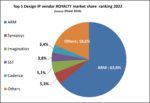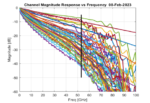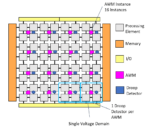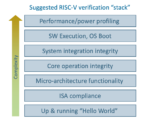Banias Labs is a semiconductor company that develops infrastructure solutions for next-generation communications. Its target market is the high-performance computing infrastructure market including hyperscale data center, networking, AI, optical module, and Ethernet switch SoCs for emerging high-performance computing… Read More
Semiconductor Intellectual Property
Design IP Sales Grew 20.2% in 2022 after 19.4% in 2021 and 16.7% in 2020!
Design IP revenues had achieved $6.67B in 2022, after $5.56B in 2021, or 20.2% growth after 19.4% in 2021 and 16.7% in 2020. IPnest has released the “Design IP Report” in April 2023, ranking IP vendors by category (CPU, DSP, GPU & ISP, Wired Interface, SRAM Memory Compiler, Flash Memory Compiler, Library and I/O, AMS, Wireless… Read More
Taking the Risk out of Developing Your Own RISC-V Processor with Fast, Architecture-Driven, PPA Optimization
Are you developing or thinking about developing your own RISC-V processor? You’re not alone. The use of the RISC-V ISA to develop processors for SoCs is a growing trend. RISC-V offers a lot of flexibility with the ability to customize or create ISA and microarchitectural extensions to differentiate your design no matter your application… Read More
Feeding the Growing Hunger for Bandwidth with High-Speed Ethernet
The increasing demands for massive amounts of data are driving high-performance computing (HPC) to advance the pace in the High-speed Ethernet world. This in turn, is increasing the levels of complexity when designing networking SoCs like switches, retimers, and pluggable modules. This growth is accelerating the need for … Read More
Interconnect Under the Spotlight as Core Counts Accelerate
In the march to more capable, faster, smaller, and lower power systems, Moore’s Law gave software a free ride for over 30 years or so purely on semiconductor process evolution. Compute hardware delivered improved performance/area/power metrics every year, allowing software to expand in complexity and deliver more capability… Read More
Mapping SysML to Hardware Architecture
The Systems Modeling Language (SysML) is used by systems engineers that want to specify, analyze, design, verify and validate a specific system. SysML started out as an open-source project, and it’s a subset of the Unified Modeling Language (UML). Mirabilis Design has a tool called VisualSim Architect that imports your… Read More
Securing Memory Interfaces
News of hackers breaking into systems is becoming common place these days. While many of the breaches reported to date may have been due to security flaws in software, vulnerabilities exist in hardware too. As a result, the topic of security is getting increased attention within the semiconductor industry around system-on-chip… Read More
Adaptive Clock Technology for Real-Time Droop Response
In integrated circuit terminology, a droop is the voltage drop that happens in a circuit. This is a well-known phenomenon and can happen due to the following reasons. The power supply falls below the operating range for which a chip was designed for, resulting in a droop. More current is drawn by the conductive elements than they … Read More
Scaling the RISC-V Verification Stack
The RISC-V open ISA premise was clearly a good bet. It’s taking off everywhere, however verification is still a challenge. As an alternative to Arm, the architecture and functionality from multiple IP providers looks very competitive, but how do RISC-V providers and users ensure the same level of confidence we have in Arm? Arm … Read More
JESD204D: Expert insights into what we Expect and how to Prepare for the upcoming Standard
Join our upcoming webinar on JESD204 and get insights into what we predict the upcoming JESD204D standard will contain, based on many years of experience working with JESD204.
Our expert speaker, Piotr Koziuk, has over a decade of experience with JESD204 standards and is a member of the JEDEC Standardization Committee. He will… Read More












PDF Solutions Charts a Course for the Future at Its User Conference and Analyst Day